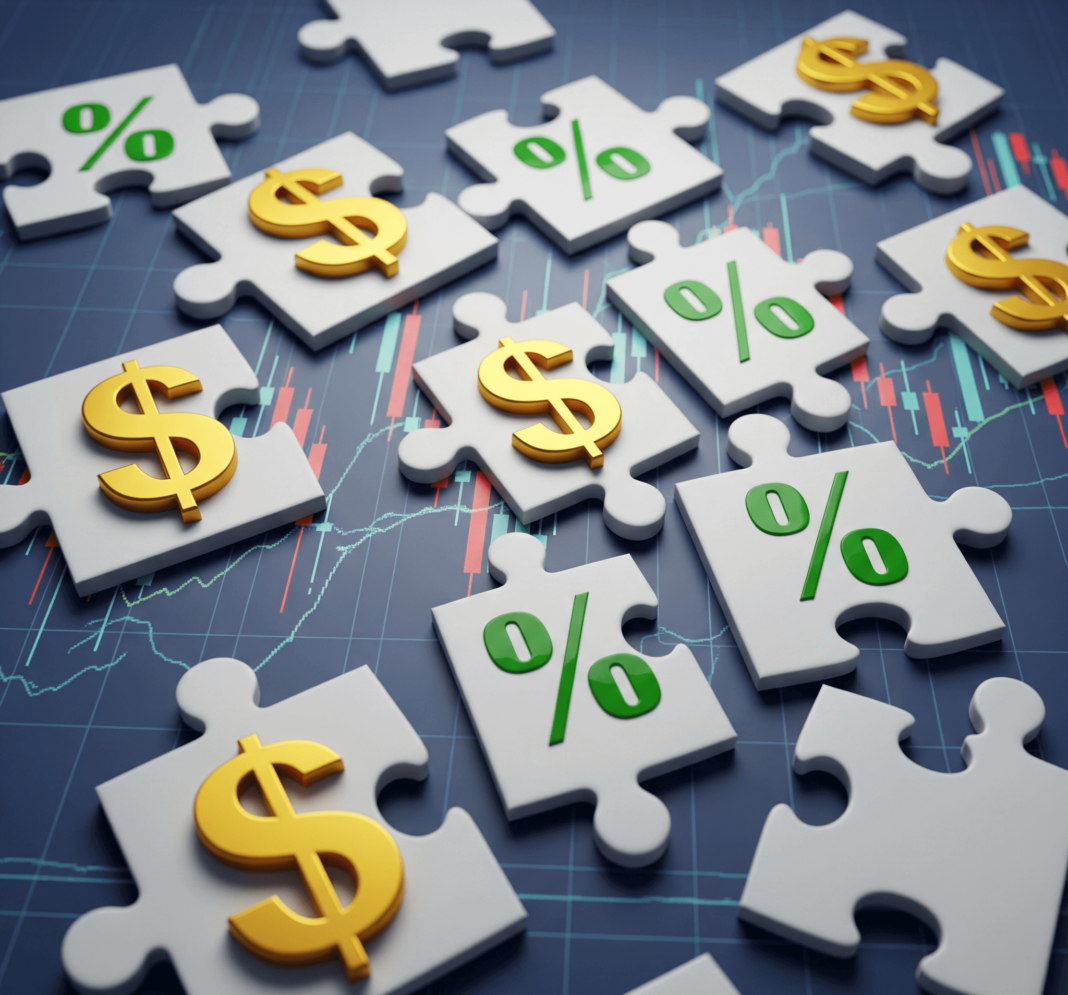Okay, so you know how sometimes you’re scrolling through the news, and you see headlines about “interest rate hikes” and the “bond market” doing something dramatic, and you just nod and scroll on, hoping it doesn’t actually affect your life? Yeah, me too. For years, that was my go-to strategy. It felt like some secret club language that only people in fancy suits with calculators understood. But guess what? It does affect your life. Especially when it comes to your investments. So, let’s have a real, down-to-earth chat about interest rates and investments, because honestly, ignoring it is like ignoring that weird noise your car is making – it’s probably not going to fix itself.
I’ve been banging out these blog posts for a while now, and one thing I’ve learned is that money stuff can feel super intimidating. But it doesn’t have to be! Think of me as your slightly clueless but well-intentioned friend who’s trying to figure this stuff out right alongside you. I’m not a financial guru (if I were, I’d be writing this from a beach in Bali, not my slightly cluttered living room in Jaipur, dodging the occasional power cut – oh wait, wrong country! Scratch that, I’m in the US, dodging the neighbor’s overly enthusiastic leaf blower). Anyway, the point is, we’re in this together.
So, grab a chai (or a coffee, depending on your time zone and preference – adaptability is key in the world of finance, I guess?), and let’s untangle this web of interest rates and investments. I promise to keep it as jargon-free and as entertaining (or at least mildly amusing) as humanly possible. Because understanding this stuff isn’t just for the Wall Street crowd; it’s for anyone who wants their money to, you know, not disappear into thin air.

The Basics: What ARE Interest Rates Anyway? (Like You’re Explaining it to a Slightly Distracted Golden Retriever)
Okay, let’s start with the absolute basics. Imagine you borrow money from a friend (or a bank). The “interest rate” is basically the extra fee you pay them for the privilege of using their money. It’s usually expressed as a percentage of the amount you borrowed.
Now, there are a gazillion different interest rates out there:
- The Federal Funds Rate: This is the rate banks charge each other for lending reserves overnight. The Fed (the Federal Reserve, the big boss of US money stuff) sets a target range for this rate, and it has a ripple effect on pretty much all other interest rates. Think of it as the master switch.
- Prime Rate: This is the benchmark rate that banks use for many types of loans to their most creditworthy customers. Other rates, like those for personal loans or some mortgages, are often quoted as “prime plus X percent.”
- Mortgage Rates: We’ve talked about these before – the interest you pay on your home loan.
- Savings Account Interest Rates: The (usually tiny) percentage the bank pays you for keeping your money with them.
- Bond Yields: This is the return you get from investing in bonds (which are basically IOUs from governments or corporations). Bond yields and interest rates are closely related and often move in the same direction.
The key takeaway here is that interest rates are the cost of borrowing money, and they affect everything from how much you pay for a car loan to how much return you can expect on some of your investments.
Why Do They Go Up and Down? The Fed’s Wild Ride
The Fed uses interest rates as a tool to manage the economy.
- Lowering rates: Makes borrowing cheaper, which encourages spending and investment. This is often done to stimulate a slowing economy. Think of it as putting the pedal to the metal.
- Raising rates: Makes borrowing more expensive, which can cool down an overheating economy and help to control inflation (when prices for goods and services go up too quickly). This is like hitting the brakes.
And guess what? The Fed has been hitting the brakes pretty hard lately to try and get inflation under control. Which leads us to…
How Interest Rate Hikes Mess with Your Investments (in a Way That’s Actually Understandable)
So, the Fed raises interest rates. Big deal, right? Well, it actually has a pretty significant impact on various types of investments. Let’s break it down:
1. Bonds: It’s Complicated (But Here’s the Gist)
This is where a lot of people’s eyes glaze over, but stick with me. When interest rates go up, newly issued bonds offer higher yields (because they have to be more attractive to investors). But what happens to the bonds you already own that have a lower yield? Their value on the market tends to decrease.
Think of it like this: if you have a bond paying 3% interest, and suddenly new bonds are being issued paying 5%, who’s going to want your old, lower-paying bond unless you sell it for a cheaper price? It’s like trying to sell last season’s trendy jacket for the same price when the new, cooler ones are out. You gotta discount it.
So, if you own bonds or bond funds, rising interest rates can lead to a temporary dip in their value. However, if you hold those bonds until maturity, you’ll still get the face value back (assuming the issuer doesn’t default). And if you’re buying bonds when rates are high, you’re locking in those higher yields, which is a good thing for future income. See? Not totally scary.
2. Stocks: The Ripple Effect
The impact on stocks is a bit more indirect, but still important:
- Higher Borrowing Costs for Companies: When interest rates rise, it becomes more expensive for companies to borrow money for things like expansion, research, and development. This can squeeze their profits and potentially slow down their growth, which can make their stocks less attractive.
- Increased Discount Rates: This is getting a bit technical again, but basically, when analysts value companies, they use interest rates to “discount” their future earnings back to the present. Higher interest rates mean those future earnings are worth less today, which can lead to lower stock valuations.
- Competition from Bonds: When bond yields rise, they can become a more attractive alternative to stocks for some investors, especially those who are more risk-averse. This can lead to some money flowing out of the stock market and into bonds, potentially putting downward pressure on stock prices.
- Slower Economic Growth: As higher interest rates cool down the economy, company earnings might suffer, which can also negatively impact stock prices.
However, it’s not all doom and gloom! Certain sectors might actually benefit from higher interest rates (like banks, which can earn more on lending). And in the long run, a healthy economy (even if it involves some interest rate adjustments) is good for stocks.
3. Real Estate: Ouch, My Mortgage Payment!
We’ve definitely talked about this before, but rising interest rates directly impact mortgage rates, making it more expensive to buy a home. This can cool down the housing market, potentially leading to slower price appreciation or even price declines in some areas. It also makes refinancing less attractive. So, if you’re looking to buy a house or refinance, those interest rate hikes definitely hit closer to home (literally!).
4. Savings Accounts: Finally, a Little Good News?
When the Fed raises rates, eventually (and I stress eventually) you might start to see slightly higher interest rates on your savings accounts and CDs. I said slightly. Don’t expect to get rich off your savings account overnight. But hey, every little bit helps, right? It might actually outpace inflation a tiny bit more than it used to! Small victories.

So, What Should You Actually Do About All This? (The “Okay, Now I’m Slightly Panicked, Help!” Section)
Alright, deep breaths. This isn’t a reason to stuff all your money under your mattress (trust me, inflation will still get you there). Here are a few things to keep in mind:
1. Don’t Panic Sell! (Please, I’ve Seen This Movie Before)
When the market gets volatile due to interest rate changes (or anything else, really), the worst thing you can usually do is panic and sell your investments. You’ll likely lock in your losses and miss out on any potential rebound. Remember that investing is a long-term game. The market goes up and down. It’s normal. Try to ride out the short-term bumps. My uncle sold all his stocks during the 2008 crash and missed out on years of recovery. Don’t be my uncle in this scenario.
2. Review Your Portfolio (But Don’t Overreact)
It’s always a good idea to check your asset allocation (how your money is spread across different types of investments) periodically, especially when the economic landscape changes. Make sure your portfolio still aligns with your risk tolerance and long-term goals. If you’re close to retirement, you might want to be more conservative. If you have decades ahead of you, you can probably stomach more volatility. But don’t make drastic changes based on short-term market noise.
3. Consider Diversification (Your Best Friend in a Stormy Market)
Spreading your investments across different asset classes (stocks, bonds, real estate, etc.) and within those classes (different sectors, different types of bonds) can help to cushion the blow if one area underperforms. It’s like having multiple umbrellas during a sudden downpour – you’re less likely to get completely soaked.
4. Think Long-Term (Repeat After Me: Long-Term!)
Investing isn’t about getting rich quick (despite what those shady online ads promise). It’s about building wealth over time. Focus on your long-term goals (retirement, your kids’ education, etc.) and try not to get too caught up in the daily market fluctuations. Interest rates will go up, and they will eventually come down again. It’s the circle of (financial) life.
5. Dollar-Cost Averaging (Smooth Out the Bumps)
If you’re regularly investing (like contributing to your 401(k) or a brokerage account each month), you’re already likely doing this. It means you’re buying a fixed dollar amount of an investment at regular intervals, regardless of the price. When prices are high, you buy fewer shares; when prices are low, you buy more. This can help to average out your purchase price over time and reduce the risk of investing a large lump sum right before a market downturn.
6. Don’t Be Afraid to Rebalance (It’s Like a Financial Spring Cleaning)
Over time, your asset allocation might drift away from your target due to different investments performing differently. Rebalancing involves selling some of your overperforming assets and buying more of your underperforming ones to bring your portfolio back in line with your original plan. It’s a way to “buy low and sell high” without trying to time the market.
7. Seek Professional Advice (If You’re Feeling Lost)
If all of this still feels like trying to understand quantum physics, don’t be afraid to talk to a qualified financial advisor. They can help you understand your situation, develop a personalized investment strategy, and navigate the complexities of interest rates and the market. Just make sure they’re a fiduciary, meaning they’re legally obligated to act in your best interest.
The Bottom Line: It’s All Connected (Like That Weird Dream You Had Last Night)
Interest rates are a fundamental part of the economic landscape, and they have a significant influence on your investments. Understanding this relationship, even at a high level, can help you make more informed decisions and avoid knee-jerk reactions when the market gets a little bumpy.
It’s not about trying to predict the future (because let’s be honest, none of us have a crystal ball that actually works). It’s about understanding the principles at play and building a resilient investment strategy that can weather different economic environments.
So, next time you see a headline about interest rates, maybe you won’t just scroll past. Maybe you’ll think, “Okay, how might this affect my little corner of the financial world?” And hopefully, you’ll remember this slightly rambling, definitely imperfect, but hopefully helpful chat.
What are your thoughts on interest rates and your investment strategy? Any funny market-related stories (missteps or unexpected wins)? Share them in the comments below – we can all learn from each other’s experiences (and maybe have a good laugh in the process!).
Cheers to navigating the financial seas, even when they get a little choppy!
Outbound Links:
- [Investopedia’s explanation of the relationship between interest rates and the stock market](https://www.google.com/search?q=https://www.investopedia.com/articles/investing/062713/interest-rates-and-stock-prices.asp) (For those who want a slightly more detailed breakdown).
- (https://www.google.com/search?q=common+investing+mistakes+funny) (Because sometimes a little humor makes tough topics easier to digest – find one you like!).





